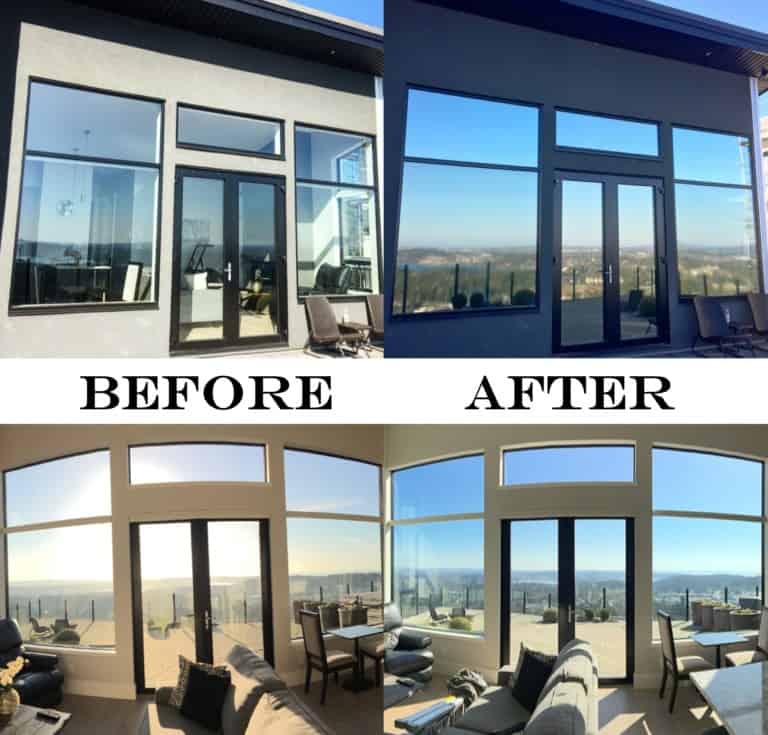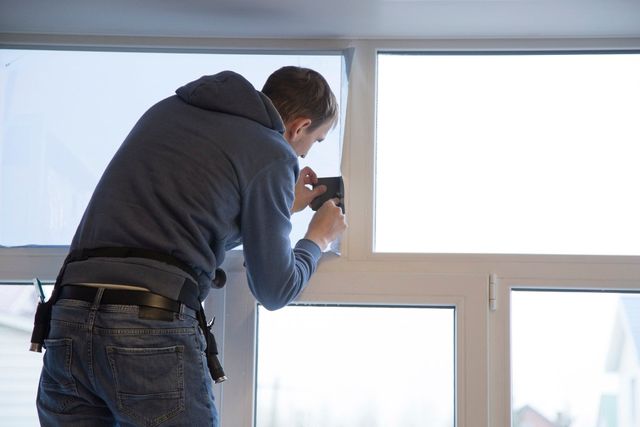Residential Window Tint for Large Windows: Maintain Comfort and Design
Residential Window Tint for Large Windows: Maintain Comfort and Design
Blog Article
How Residential Window Tinting Boosts Your Home's Energy Performance
Residential home window tinting offers a compelling option for property owners looking for to enhance energy effectiveness within their space. By applying specialized movies to windows, it successfully decreases warmth transfer, thereby supporting interior temperature levels and lessening the demand for excessive home heating or air conditioning. This not only reduces energy intake however also provides an extra comfortable setting by reducing glare. Understanding the nuances of just how tinting works and picking the suitable type for your home can be pivotal. Curiously, what aspects should one think about before making this financial investment?
Recognizing Window Tinting
Comprehending home window tinting is important for property owners looking for to boost both convenience and power effectiveness in their living areas. Residential Window Tint. Home window tinting involves the application of a slim movie to the interior or exterior surface area of glass home windows. This movie can substantially regulate the quantity of sunlight and warm that gets in a home, hence affecting indoor climate problems
There are various sorts of window tinting films available, each with distinct residential properties. Colored films soak up solar power, while reflective movies disperse it away from the glass surface. Ceramic movies use an equilibrium of presence and warmth being rejected, making them a prominent option amongst house owners. The effectiveness of home window tinting is usually determined by its Visible Light Transmission (VLT) percentage, which indicates just how much light can go through the movie.
Benefits of Power Effectiveness
Window tinting not only boosts visual appeals but likewise plays a substantial duty in boosting energy performance within domestic areas. By decreasing warm transfer through home windows, colored films produce a more stable interior environment, which can lead to considerable reductions in power intake for heating & cooling. This power effectiveness equates right into reduced utility costs, giving house owners with substantial long-term cost savings.

Furthermore, window tinting improves the convenience of living areas. By minimizing glare and blocking dangerous UV rays, tinted windows develop an even more enjoyable setting, which can lead to boosted well-being for owners. The security against UV rays additionally assists maintain furnishings and floor covering from fading, adding to the longevity of house products.
Exactly How Tinting Functions
Tinting movies run through a combination of sophisticated products and technologies made to regulate the quantity of solar power entering a home. Largely composed of polyester, these films frequently include metal or ceramic fragments that soak up and reflect heat. This twin ability allows them to browse around here substantially lower the penetration of ultraviolet (UV) rays and infrared radiation while permitting visible light to go through.
The effectiveness of home window tinting is determined by its solar warmth gain coefficient (SHGC), which shows how much solar power is transmitted through the home window. Reduced SHGC values are more suitable as they denote greater heat rejection. Furthermore, home window colors can feature a variety of tones, enabling homeowners to customize their visual choices while improving power effectiveness.
Moreover, these films serve as a barrier, avoiding heat loss throughout chillier months by mirroring interior heat back into the living area. This thermal insulation impact matches the air conditioning benefits gained throughout warmer months, adding to a balanced interior climate year-round. By managing solar energy successfully, residential home window tinting not just boosts convenience but likewise plays a vital role in reducing power usage and decreasing utility expenses.
Choosing the Right Tint

There are numerous types of window movies readily available, including colored, metalized, and ceramic. Ceramic films give outstanding heat control without compromising visibility and are very durable, making them a popular option.
Visible light transmission (VLT) is an additional essential aspect, as it indicates the quantity of all-natural light that can pass through the tinted glass. Homeowners ought to pick a tint with a VLT that matches their illumination preferences while still giving ample glare decrease.
Additionally, analyzing the solar warm gain coefficient (SHGC) can aid identify how well a tint can block heat from sunlight. A lower SHGC indicates much better heat control, ultimately enhancing energy efficiency.
Setup and Maintenance Tips
Proper installation and maintenance are crucial parts in making the most of the benefits of residential window tinting. To accomplish optimum outcomes, it is a good idea to work with a qualified expert for installation. This ensures that the tint is applied correctly, preventing air bubbles, wrinkles, or misalignment that can jeopardize efficiency. Specialists likewise utilize specialized tools and techniques, which can this article enhance the resilience and performance of the color.
Adhering to installation, upkeep is important to lengthen the life of the window movie. It is advised to wait at least 30 days before cleaning up the tinted windows to enable the glue to treat fully.
Resolving these problems immediately can prevent more damages and preserve energy performance. By adhering to these installation and maintenance pointers, property owners can ensure their window tinting proceeds to provide read more significant power savings and comfort for years to come.
Verdict
In final thought, residential home window tinting offers as a reliable solution for enhancing energy effectiveness within homes. By minimizing heat transfer and blocking harmful UV rays, window movies add to lower energy usage and enhanced indoor convenience.
Window tinting includes the application of a thin movie to the interior or exterior surface area of glass windows. By reducing warm transfer with home windows, colored movies create a much more stable indoor environment, which can lead to substantial decreases in energy consumption for home heating and cooling.The performance of home window tinting is determined by its solar warm gain coefficient (SHGC), which indicates how much solar power is transferred via the window. By taking care of solar energy properly, domestic home window tinting not just improves comfort yet additionally plays a crucial role in minimizing energy intake and reducing utility costs.
By reducing warmth transfer and obstructing unsafe UV rays, home window films contribute to reduce power usage and boosted interior convenience.
Report this page